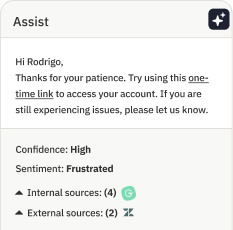Workforce Management App - Assembled

Workforce Management App
When it comes to managing a workforce, one of the biggest concerns that managers and employees will face is scheduling. It can be incredibly difficult to make sure that they have enough people on staff to cover various shifts. There are some industries that have advanced call schedules that need to be covered, and there are still other industries that might even require people on-hand to cover 24 hours per day, 7 days per week. This is often the case when it comes to customer support and service centers such as call centers.
There are numerous companies that are comfortable with using a workforce management app to help address these issues, and there are even some apps that enable employees to swap shifts with their colleagues, freeing up more time for managers to handle other concerns. There are also hourly workforce management software programs out there that some might find helpful, programs in which managers might be able to institute certain rules, allowing employees to freely trade shifts amongst themselves, as long as everything is properly covered. There are also forecasting tools available that call centers can use to ensure that they have enough people scheduled to work, as demand rises and falls. These are just a few of the biggest examples of call center scheduling at work.
Enterprise Workforce Management Software
When you’re considering larger corporations, though, this is a very different animal compared to that of smaller businesses. Enterprise corporations have larger workforces, and there might be more rotation when it comes to their employees. Furthermore, employees might also be transferred to work in other locations temporarily, therefore leading to short-term scheduling issues. There are also more people who might get sick or go on vacation, leading to additional new concerns. But issues like these are exactly where enterprise workforce management software can be so helpful. Using the abilities of enterprise workforce management software, many of these problems can be addressed automatically and allow managers to focus their efforts on other issues.
When it comes to using an enterprise workforce management software program, it is very important to first ensure that it is a secure program, as it is going to be in charge of protecting a lot of sensitive employee data. It is also vital to make sure that your enterprise workforce management software is able to scale with the rest of the company. Furthermore, it is a good idea to invest in enterprise workforce management software that doubles as mobile workforce management software. There are lots of companies out there that have employees who go into the field on a regular basis. These employees might be gone for a while, and as a result, their shifts have to be covered. This is yet another area in which enterprise workforce management software can be of such great use.
What Is Workforce Management Software?
It is critical for all companies to make sure that their workforce needs are being handled appropriately. This is where workforce management software comes in. For those of you out there who might be asking, “what is workforce management software?” it is a software program that has been designed to help companies manage their workforces, ensuring that they have enough people to handle their workforce needs at a given point in time. When looking at the definition of a workforce management system, this refers to a system that has been designed to help managers anticipate demand and ensure that they have enough people on-hand to meet demand. This is also a system that can help managers look at employees as they go on vacation, or call in sick, thus allowing the business to adjust and meet these demands quickly.
With this in mind, it’s no wonder why workforce management software is one of the most important tools to have in the business world today. In the past, many of these tasks might have been handled by hand. But now, with workforce management software, many of these tasks are automated - and businesses that have been able to automate many of these processes are now empowered to rise to meet the needs of not only their employees but of their customers, as well. For this very reason, workforce management software is one of the most important tools in the business world today.
Workforce Management Call Center
When it comes to workforce management software, one of the most common places you will see it used is in a call center. When it comes to customer support and service, customers have bigger expectations than they did in the past - and the companies that are going to truly succeed today are those companies that are best able to rise to meet these demands. This is precisely why workforce management call center practices are so important. It is vital for companies to ensure that they have enough employees available to work in their call centers. Companies want to make sure they are able to address the needs of their customers in a timely manner. On the other hand, though, they also do not want to schedule too many people to work shifts that are unnecessary.
This is where workforce scheduling call center practices come into play. When looking at call center workforce management best practices, companies need to track metrics such as the average time it takes to address a customer concern, how many calls are being handled per shift per employee, and how often calls are being escalated. From there, companies can then make the appropriate adjustments to their staffing needs, using workforce management software to anticipate the ebbs and flows of customer demand well in advance.
Workforce Management Software
Workforce management software is a tool that will prove to be absolutely critical in every business. When compared to other tools that a business uses on a regular basis, workforce management software is different in that it is used to anticipate future issues. This could include things such as upcoming vacations (or even seasonal demands) in employees. Using a workforce software login, companies can take a look at their current workforce, while at the same time receiving notifications from the workforce management software program regarding any potential issues which may arise.
In this manner, workforce management companies have designed advanced workforce management software that is intended to be used by managers for handling potential scheduling concerns well in advance. Then, managers can make sure that they hire and train enough people before the customer demand ever has the chance to exceed the ability of the employees to handle it.
Workforce Management Tools
When it comes to workforce management, there are plenty of tools out there that you can make great use of. Consider this: there are lots of businesses that simply use templates and charts. And while these are solid examples of popular workforce management tools, there are many more advanced and capable options out there. Of course, there is always going to be a place for sticky notes and Excel spreadsheets, when it comes to workforce management tools for a call center; however, it is also very important to leverage more advanced options.
When it comes to tools for workforce management, it is critical to highlight the role that the workforce management software plays. In call centers, workforce management software is a powerful tool that can track metrics - such as how long it is taking each employee to handle calls - thereby allowing managers to spot issues. It is also a tool that can alert managers to potential increases in demand, allowing them to schedule more people to work. All call centers should be using workforce management software to help them with their scheduling needs.
Workforce Management System
When it comes to a workforce management system, this includes multiple processes that are all working together. For example: some of the most important workforce management services include scheduling issues, training issues, scalability concerns, forecasting, and potential changes in demand. In this sense, building a whole workforce management system can prove to be a difficult challenge.
While software can certainly be incredibly helpful for building a workforce management system, this is not the only tool that businesses should be using. In addition, there are also a few other workforce management best practices that managers should be following. First, managers need to make sure they collect feedback from their employees. See whether the employees like using the system to handle their scheduling concerns. Next, make sure that the workforce management system is able to talk to other departments. All managers need to be on the same page, if they would like to get the most out of their workforce management system. And finally, every workforce management system has to provide tracking and reporting features. By looking at trends, managers will be able to make faster decisions, with regards to workforce management.
Workforce Planning Software
When it comes to workforce planning, this refers to a different type of workforce software. Forecasting and scheduling is mostly clerical work that has been automated by advanced software, whereas workforce planning is a bit different.
Workforce planning has more to do with the hiring of more employees to handle various tasks. And while this is still one of the most important key points of customer service, this is more of a long-term part of effective workforce management than it is simply making sure that there are enough employees on-hand to cover various shifts throughout the course of the week. At the same time, though, there are still some great software programs for workforce planning available that can help companies to better address this task.
When it comes to workforce planning, this refers to the process of taking a look at all parts of the workforce. Next, managers will also look into what is working and what is not. After this, managers will have to decide whether they simply need to shift employees around, or if they need to hire more people. In some cases, this could involve training employees to handle other tasks to make them more effective in the workplace. The goal of workforce planning is to make sure that resources are being utilized to the best possible extent. Software programs can be used to highlight trends for managers, ensuring that they have access to all of the data before they make a decision, with regards to workforce planning.
Related links:
https://www.assembled.com/page/best-workforce-management-software
https://www.assembled.com/page/workforce-management-tools
https://www.assembled.com/page/call-center-workforce-management-software
https://www.assembled.com/the-essential-workforce-management-glossary
https://www.assembled.com/page/wfm-call-center
https://www.assembled.com/page/wfm-forecasting
https://www.assembled.com/page/wfm-solutions
https://www.assembled.com/page/workforce-management-app
https://www.assembled.com/page/contact-center-workforce-management-software
https://www.assembled.com/page/remote-workforce-management-software
https://www.assembled.com/blog/5-ways-workforce-management-can-save-you-time-and-money
https://www.assembled.com/blog/what-exactly-is-workforce-management




